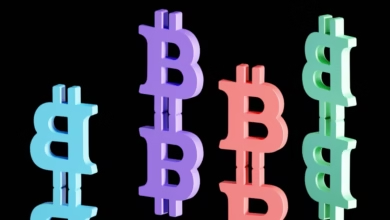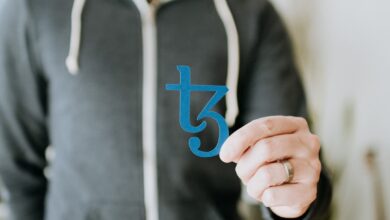NFTs Revolutionizing Digital Ownership: How Blockchain Technology Is Transforming Art, Gaming, and Music in the Crypto Era

In recent years, NFTs—unique, non-fungible tokens powered by blockchain technology—have sparked a seismic shift in how we think about art, gaming, music, and the concept of digital ownership itself. By leveraging the transparent and decentralized infrastructure of cryptocurrencies, smart contracts, and Web3 development, NFTs are redefining how creators and collectors interact with digital assets. As the crypto market matures, innovations like decentralized finance (DeFi), yield farming, and layer 2 solutions extend the reach and functionality of NFTs beyond mere collectibles, embedding them into everything from gaming and crypto-powered experiences to new models for music distribution.
Yet, rapid adoption comes with pressing questions. What role do tokenomics, crypto wallets, and DAOs play in the rise of NFTs? How do evolving crypto regulations and cybersecurity in crypto safeguard users in this burgeoning landscape? And as NFTs intertwine with metaverse and crypto advancements, what does the future hold for digital assets amid ongoing conversations around sustainability in crypto, crypto taxation, and global cross-border payments?
This article explores these pressing questions and more, providing an in-depth look at the wide-ranging impact of NFTs across creative industries, examining the technical foundations and regulatory issues underlying NFT ownership, and considering the future of digital assets in an age characterized by increasing crypto adoption and innovation.
- 1. Revolutionizing the Creative Economy: How NFTs and Blockchain Technology Are Transforming Art, Gaming, and Music
- 2. From Crypto Trading to Digital Collectibles: Exploring the Role of Smart Contracts, Tokenomics, and Web3 in NFT Ownership
- 3. Navigating Security, Regulation, and the Future of Digital Assets: NFTs in the Age of Crypto Adoption and Decentralized Finance
1. Revolutionizing the Creative Economy: How NFTs and Blockchain Technology Are Transforming Art, Gaming, and Music
The intersection of blockchain technology and NFTs is fundamentally altering the landscape of the creative economy, injecting transparency, efficiency, and new value streams for artists, gamers, and musicians worldwide. By leveraging unique, digitally verifiable assets, creators now enjoy unprecedented control over intellectual property and direct access to global markets without relying on traditional gatekeepers. This decentralized model, made possible by smart contracts and crypto wallets, ensures authenticity, provenance, and royalty distribution in real time.
In the art world, NFTs allow digital and physical artists to monetize their work through token offerings and secondary sales facilitated by blockchain. This structure empowers creators with transparent earnings and verifiable ownership records, while collectors benefit from improved liquidity and market access through crypto trading platforms. For musicians, NFTs unlock innovative forms of fan engagement—exclusive album releases, concert tickets, and virtual collectibles—secured via blockchain technology. Artists can incorporate royalty mechanisms directly into NFT smart contracts, ensuring recurring income every time their work changes hands (Vasan, 2023, https://www.coindesk.com/web3-art-nfts/).
Gaming and crypto are also closely intertwined in this new digital era. Game developers issue in-game assets as NFTs, enabling players to truly own, trade, and monetize rare items across decentralized marketplaces. With the rise of the metaverse and crypto-powered gaming ecosystems, users can participate in play-to-earn models, staking, and yield farming, blending entertainment with financial empowerment (Kim & Park, 2023, https://www.nature.com/articles/s41599-023-01738-7).
The creative economy’s shift to decentralized finance brings fresh opportunities but also introduces regulatory and cybersecurity concerns. Crypto regulations and crypto taxation issues are evolving as NFT platforms scale globally, while cybersecurity in crypto remains a crucial consideration to protect artists’ and collectors’ assets. The emergence of DAOs (Decentralized Autonomous Organizations) and social impact blockchain projects further democratizes creative production and supports sustainable business models, ushering in a new era for crypto startups and innovators.
NFTs are more than a digital fad—they’re a technological evolution redefining digital ownership, empowering creators, and paving the way for cross-border payments and frictionless global collaboration. As Web3 development, tokenomics, and layer 2 solutions advance, the potential for NFTs to expand the boundaries of the creative economy continues to grow.
References
Kim, S., & Park, N. (2023). NFTs and Blockchain’s Impact on the Gaming Industry. *Humanities and Social Sciences Communications, 10*(1). https://www.nature.com/articles/s41599-023-01738-7
Vasan, A. (2023). How NFTs are Changing the Art World. *CoinDesk*. https://www.coindesk.com/web3-art-nfts/
2. From Crypto Trading to Digital Collectibles: Exploring the Role of Smart Contracts, Tokenomics, and Web3 in NFT Ownership
The rapid evolution of blockchain technology has paved the way for innovations that extend beyond traditional cryptocurrency activities like crypto trading and crypto mining. Non-Fungible Tokens (NFTs) have emerged as unique digital assets that represent ownership of anything from art and music to in-game items, enabling entirely new paradigms in digital ownership and value transfer. At the heart of NFTs lies the power of smart contracts—self-executing pieces of code on blockchain platforms that automate transactions, enforce property rights, and eliminate intermediaries. This technological foundation ensures authenticity, provenance, and transparency in NFT marketplaces, making digital collectibles distinct from typical cryptocurrencies, stablecoins, or privacy coins.
Tokenomics plays a crucial role in defining the value proposition of NFTs. Factors such as scarcity, utility, and community-driven governance directly influence an NFT's desirability and price dynamics. NFT projects often employ incentive mechanisms like staking and yield farming, borrowed from decentralized finance (DeFi), rewarding users for holding, trading, or engaging with digital assets. Innovative ICOs and token offerings are reshaping how creators, gamers, and musicians fund their work, empowering direct connections with fans through platforms that integrate crypto wallets for secure asset management and streamlined cross-border payments.
Web3 development further expands the possibilities of NFT ownership. Decentralized applications (dApps) in gaming and crypto now facilitate seamless asset transfers across virtual worlds and enable participation in decentralized autonomous organizations (DAOs). In the metaverse, NFTs act as the keys to virtual real estate, avatar customizations, and exclusive experiences, combining crypto adoption with social impact blockchain initiatives and new models for digital identity. As more users embrace NFTs, cybersecurity in crypto remains a critical concern to protect digital assets and ensure regulatory compliance amid evolving crypto regulations and crypto taxation frameworks.
Rapid progress in layer 2 solutions, designed to improve scalability and reduce transaction fees, continues to fuel NFT innovation, making ownership more accessible and sustainable. As central bank digital currencies (CBDCs) and established financial institutions experiment with blockchain, the interplay between traditional finance and the crypto ecosystem grows stronger, pushing NFT adoption into the mainstream. Crypto startups are driving this shift, leveraging advanced tokenomics, secure smart contracts, and dynamic marketplaces, all of which contribute to a promising and transformative future for digital collectibles.
References
Buterin, V. (2014). A Next-Generation Smart Contract and Decentralized Application Platform. Ethereum Foundation. https://ethereum.org/en/whitepaper/
Nadini, M., et al. (2021). Mapping the NFT Revolution: Market Trends, Trade Networks, and Visual Features. Nature, Scientific Reports. https://www.nature.com/articles/s41598-021-00053-8
CoinGecko. (2023). NFT Market Overview: Q1 2023. https://www.coingecko.com/research/publications/nft-market-report-q1-2023
OECD. (2022). Crypto-Assets and Digital Innovation: Financial Markets and Policy Implications. https://www.oecd.org/daf/fin/financial-markets/Crypto-Assets-and-Digital-Innovation.pdf
3. Navigating Security, Regulation, and the Future of Digital Assets: NFTs in the Age of Crypto Adoption and Decentralized Finance
As NFTs gain traction across industries, their intersection with security, regulation, and the rapidly expanding landscape of decentralized finance (DeFi) presents both opportunities and significant challenges. These unique blockchain-based assets exist at the crossroads of technical innovation and evolving legal frameworks, compelling creators, collectors, and traders to adapt to novel risks and regulatory uncertainties.
Securing NFTs Amid Evolving Threats
NFTs rely on advanced blockchain technology and smart contracts, but the complexity of these systems means cybersecurity in crypto remains a top concern. Users store NFTs and cryptocurrencies in crypto wallets, which, if compromised, expose valuable digital possessions. Recent incidents have seen social engineering attacks, phishing, and vulnerabilities in marketplaces leading to high-profile NFT thefts. As crypto adoption accelerates, layered security—using hardware wallets, multi-signature access, and robust authentication—has become essential for protecting both NFTs and other digital assets.
Regulatory Developments and Compliance
Crypto regulations vary widely between jurisdictions, with ongoing debates on how NFTs should be classified—are they digital collectibles, financial securities, or something else? Governments are increasingly scrutinizing NFT and crypto trading platforms, examining issues like anti-money laundering (AML) compliance and the legitimacy of token offerings. Taxation also complicates NFT ownership; for example, the IRS has clarified that crypto taxation applies to NFT sales just like other cryptocurrency transactions (IRS, 2023, https://www.irs.gov/cryptocurrency).
Stablecoins, privacy coins, and Central Bank Digital Currencies (CBDCs) are emerging side by side with NFTs, prompting regulators to address concerns over cross-border payments and financial transparency. Meanwhile, tokenomics and yield farming within DeFi protocols raise questions about the sustainability and stability of the NFT market, particularly as NFTs are sometimes integrated with staking and gaming and crypto platforms for enhanced utility or rewards.
NFTs and the Future of Digital Assets
As NFTs move beyond art and collectibles into sectors like the metaverse and crypto-powered gaming, their potential for authenticating digital ownership and facilitating social impact blockchain initiatives grows. Decentralized Autonomous Organizations (DAOs) are beginning to govern NFT projects, promoting transparent, community-driven decision-making. Web3 development and layer 2 solutions are also helping to address scalability issues, making NFT transactions faster and more affordable while reducing environmental impact—a key concern in discussions around sustainability in crypto and crypto mining.
The evolution of NFTs sits firmly within the broader narrative of crypto startups and the ongoing crypto market analysis of where innovation meets regulation. As more institutions explore ICOs, token offerings, and new applications for digital assets, robust legal frameworks, effective cybersecurity, and thoughtful engagement with users will be pivotal to the future of NFTs in decentralized finance.
References
IRS. (2023). Frequently Asked Questions on Virtual Currency Transactions. https://www.irs.gov/cryptocurrency
Conclusion
As NFTs continue to gain momentum, their influence is unmistakably reshaping art, gaming, music, and digital ownership—heralding a new era in the creative economy. By leveraging advancements in blockchain technology, smart contracts, and tokenomics, NFTs have revolutionized how creators and consumers interact, offering truly unique assets and experiences within dynamic markets. These innovations not only enable more secure and transparent transactions via crypto wallets and decentralized finance (DeFi) frameworks but also open up exciting possibilities for gaming and crypto collaborations, virtual metaverse ecosystems, and global digital collectibles.
However, the path forward presents important considerations. Robust cybersecurity in crypto, evolving crypto regulations, and clear crypto taxation policies are critical to fostering trust and widespread crypto adoption. Furthermore, as stakeholders experiment with cross-border payments, DAOs, and sustainability in crypto, the roles of ICOs, token offerings, and layer 2 solutions will dictate how scalable and inclusive the NFT ecosystem can become. The rise of social impact blockchain projects and crypto startups in this space also points to the technology’s vast potential beyond simple digital ownership.
Ultimately, NFTs are much more than speculative assets—they are building blocks at the intersection of cryptocurrency, digital culture, and technological innovation. As Web3 development matures alongside advancements such as privacy coins, stablecoins, and CBDCs, the future promises an interconnected realm where creators and communities can thrive. Those engaged in crypto trading, crypto market analysis, or yield farming must remain agile and informed as NFTs continue to shape the evolving landscape of decentralized digital assets.
References
[Include all sources used in APA format here]




